
How do you choose the right Pots?
Table of Contents
- Fiberglass Planters
- Concrete Planters
- Plastic Planters
- Terracotta and Ceramic Planters
- Metal Planters
- Wood Planters
- Foam Planters
- The best material for outdoor planters
- The best material for indoor plant pots
2. Fiberglass Planters
Fiberglass planters, a modern material favored by developers and landscapers, are made by spinning glass into fibers and mixing them with resin to form a strong and flexible composite. This mixture is molded into various shapes and sizes, then sanded and primed for a smooth, protective finish. Additionally, drainage holes can be drilled into the bottom to ensure proper water drainage.
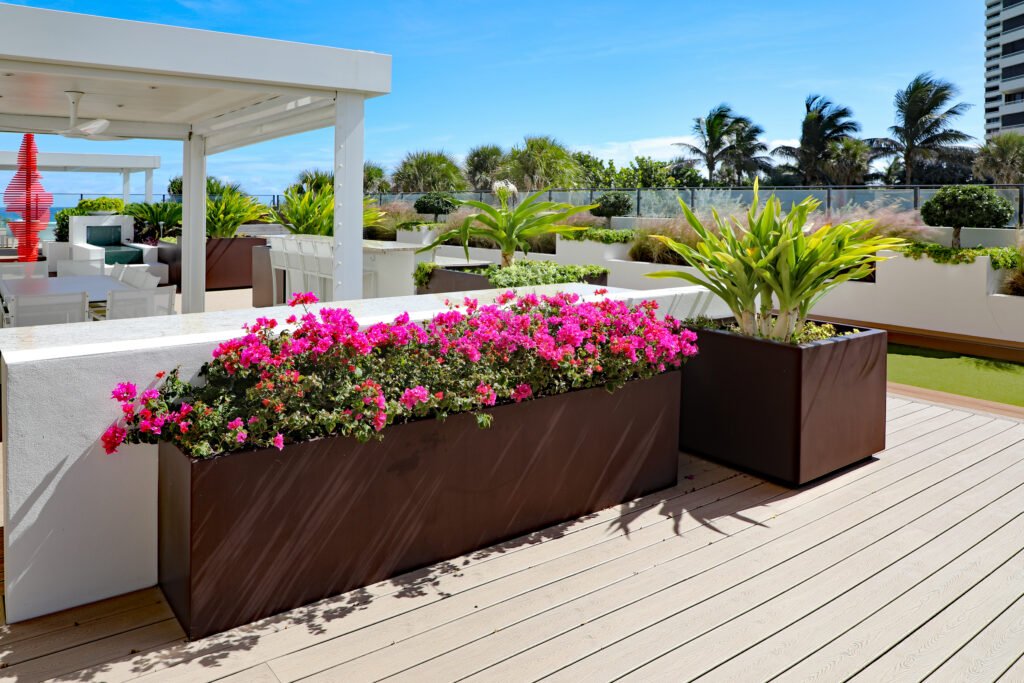
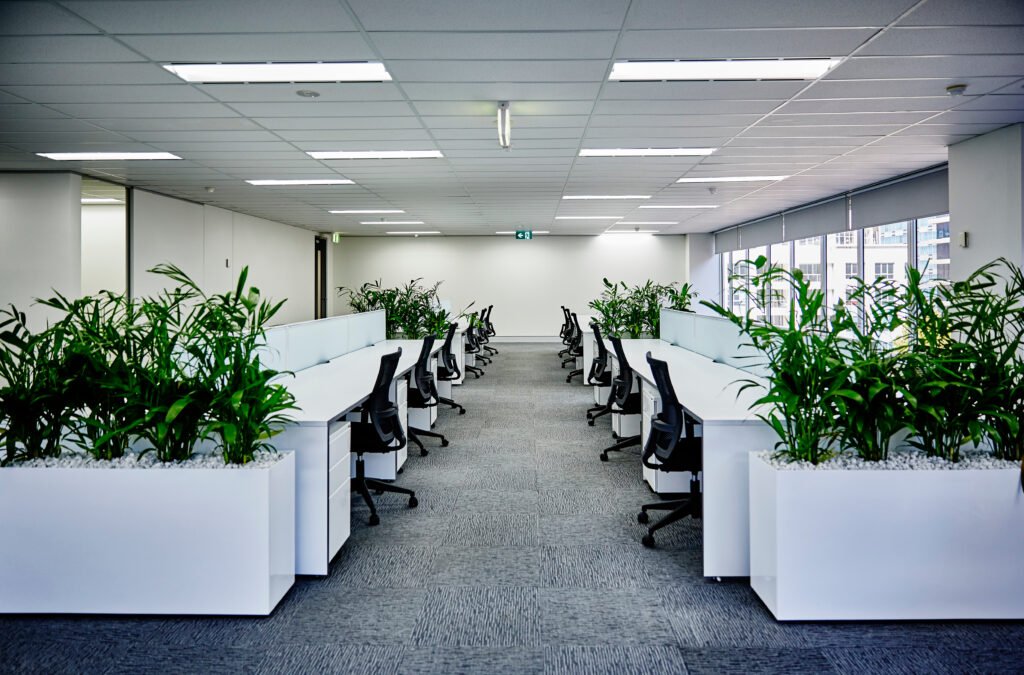
Advantage of Fiberglass Planters:
- Durability: Extremely strong and flexible; suitable for both indoor and outdoor use; resistant to damage with easy maintenance for scratches.
- Quality: High manufacturing standards ensure superior strength and finish; lightweight, making them ideal for large containers at a low cost.
- Plant Health: Provides UV protection in hot climates and is waterproof; non-porous, preventing chemical leaching into soil, making it safe for growing edible plants.
Disadvantages of Fiberglass Planters:
- Cost: More expensive than plastic and terracotta, although cheaper than wood and metal; requires a higher investment for longevity and plant health.
- Manufacturer Dependent: Quality can vary; some manufacturers may use excessive resin and fillers, resulting in heavier, inferior products. It’s important to be cautious of heavy fiberglass planters.
2.Concrete Planters
Concrete is produced by mixing cement paste with water, sand, and rock, often enhanced with chemicals for binding. Wet concrete is shaped using molds and is typically light grey, but can be painted in various colors with masonry paint.
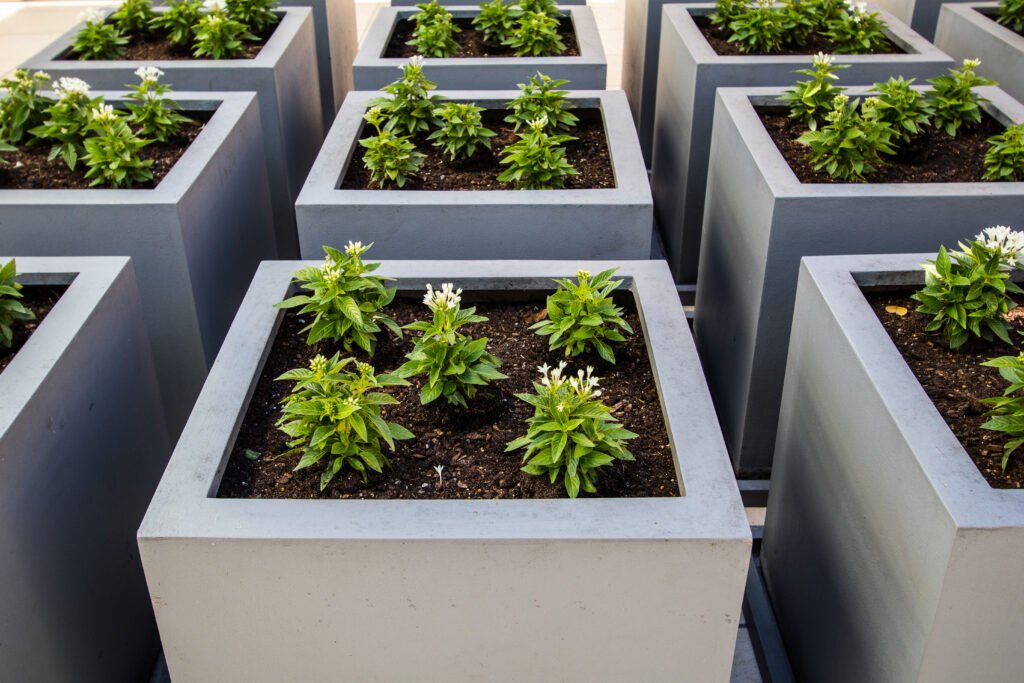
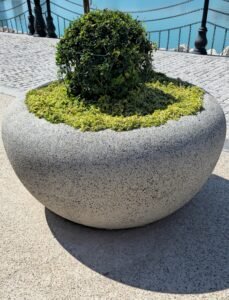
Advantage of Concrete Planters:
- Color: Naturally light-gray, blending well in various color schemes; Easily customizable with masonry paint for DIY projects.
- Weight: Heavy and durable, making them suitable for outdoor use with large plants, resistant to strong winds and weathering.
- Shapes and Sizes: Versatile molding process allows for various shapes and custom sizes, including bespoke designs for specific needs.
Disadvantages of Concrete Planters:
- Environmental Impact: Production of concrete is environmentally damaged, particularly due to CO2 emissions from cement manufacturing, contributing to global warming.
- Fragility: While strong, concrete is brittle and can crack from hard impacts or freeze-thaw cycles; Care is needed to prevent damage.
- Plant Health Concerns: Contains lime that can leach into soil, creating an alkaline pH that may stunt growth for many plants; Also porous, leading to quick moisture loss.
Fiberglass vs. Concrete Planters:
- Durability: Both fiberglass and concrete planters are highly durable with long lifespans.
- Movability: Concrete planters are heavy and difficult to move without risking damage to property, while fiberglass planters are lightweight and can be easily moved, even when filled with soil and plants.
- Investment: Both require strong up-front investment, but fiberglass offers more flexibility in terms of relocation.
3. Plastic Planters:
Introduced in 1907, plastic planters are made from non-renewable crude oil. They are versatile and come in various types, like uPVC, which is safe for growing food.
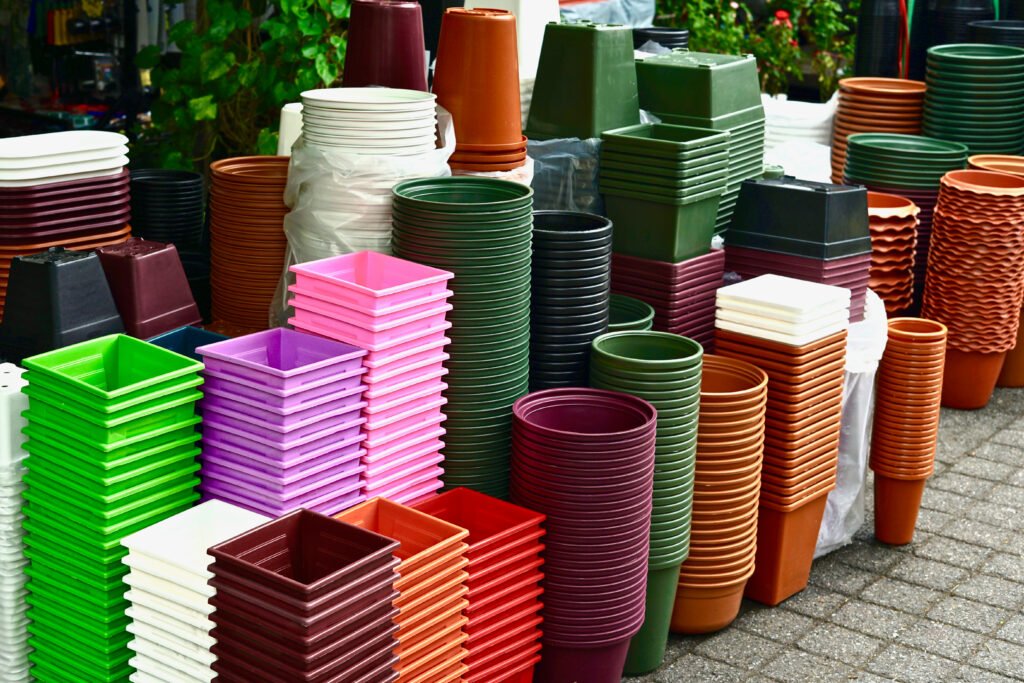

Advantages of Plastic Planters:
- Affordable: Mass-produced and inexpensive to manufacture and shape.
- Lightweight: Strong yet lightweight, making them durable and easy to transport.
Disadvantages of Plastic Planters:
- Environmental Impact: Takes thousands of years to degrade, releasing toxins into ecosystems.
- Potential Plant Harm: Chemicals from certain plastics can affect plant health; uPVC is safer for edibles.
- Limited Longevity: Can become brittle and crack with prolonged sun and heat exposure, often lasting just one season.
Fiberglass Planters vs. Plastic Planters:
- Appearance: Fiberglass offers a sleek, high-quality finish, while plastic looks cheaper and colors may fade over time.
- Durability: Fiberglass is more robust, retains shape, and withstands extreme temperatures better than plastic, which can warp or crack.
- Plant Health: Both materials are safe for plants, but fiberglass is better at regulating temperatures.
- Overall: Fiberglass outlasts plastic and maintains its structural integrity longer.
4. Terracotta and Ceramic Planters
Terracotta and ceramic planters are both made from clay but differ in appearance and properties. Terracotta, known for its reddish-brown color and rustic look, is unglazed and ideal for plants requiring good drainage. Ceramic, typically light-colored and often glazed, retains moisture well, making it suitable for plants that need consistent hydration.
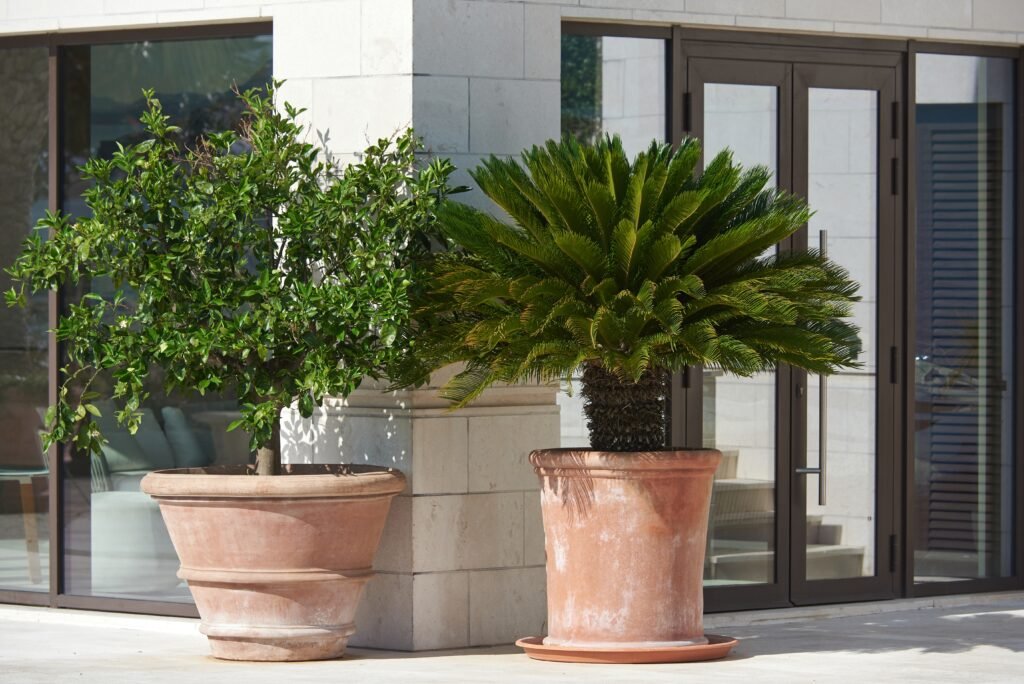
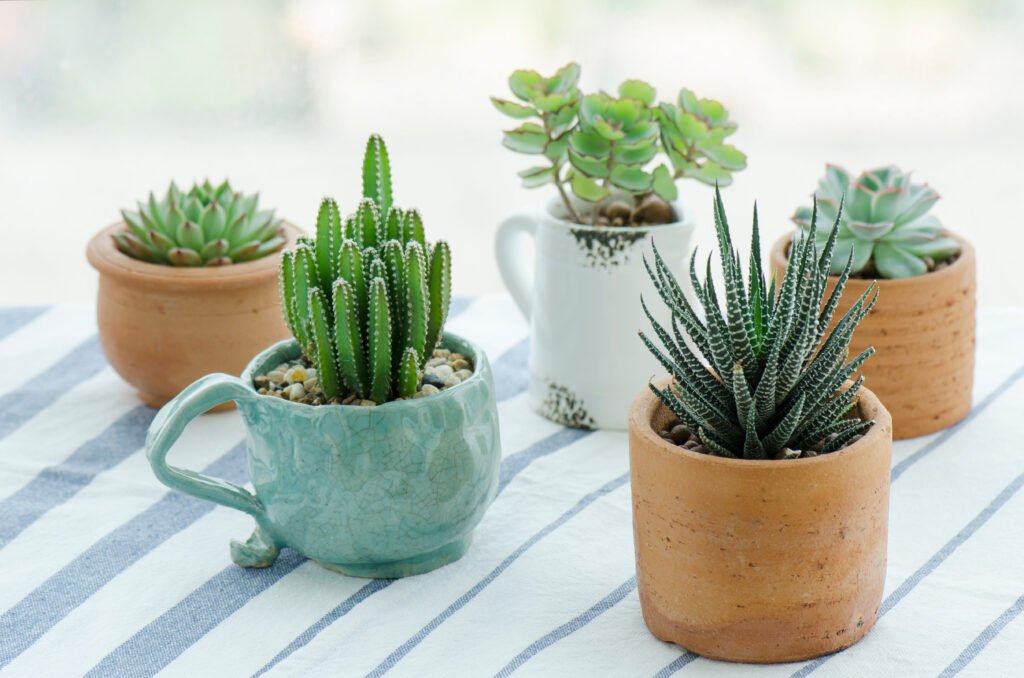
Advantages of Terracotta and Ceramic Planters:
- Cost: Available in a wide price range, making them affordable and reusable, saving money over time.
- Durability: Glazed ceramic planters are highly durable, lasting through sun and cold, and both can be reused safely.
- Appearance: Terracotta develops a natural, aged look with weathering, offering visual appeal both indoors and outdoors.
Disadvantages of Terracotta and Ceramic Planters:
- Weight: They are heavy and difficult to move, especially large pots, making them less ideal for seasonal rearranging.
- Brittle: Prone to cracking if dropped, and the porous nature can cause damage from freezing and thawing, leading to chips and fissures over time.
Fiberglass vs. Terracotta Planters:
- Customizability: Fiberglass can be easily repainted and offers more color options, while terracotta requires molecular changes to alter color.
- Weight: Fiberglass is lighter and easier to move compared to heavy terracotta pots.
- Appearance: Terracotta provides a rustic, traditional look, while fiberglass fits more modern designs.
- Plant Health: Both provide good drainage, but terracotta can crack in cold weather and retain excess heat, which may harm roots.
5. Metal Planters
Metal planters, made from materials like steel, aluminum, zinc, and copper, are durable but can rust over time, especially steel, which turns red due to weathering. Since metal is non-porous, it’s important to drill drainage holes to ensure proper water flow and airflow for healthy plant growth.
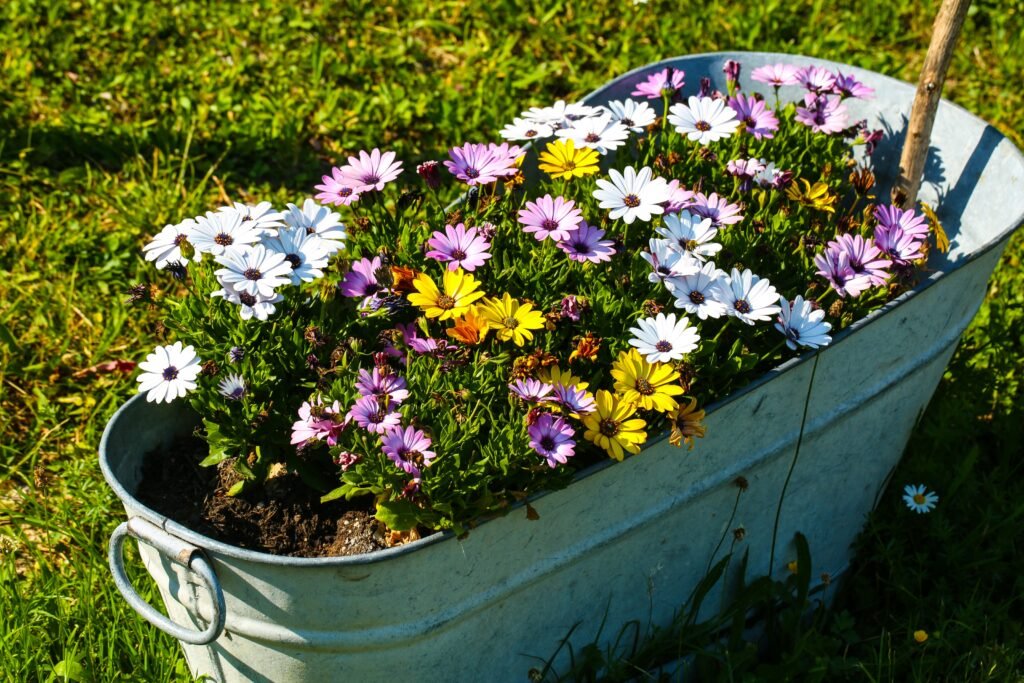
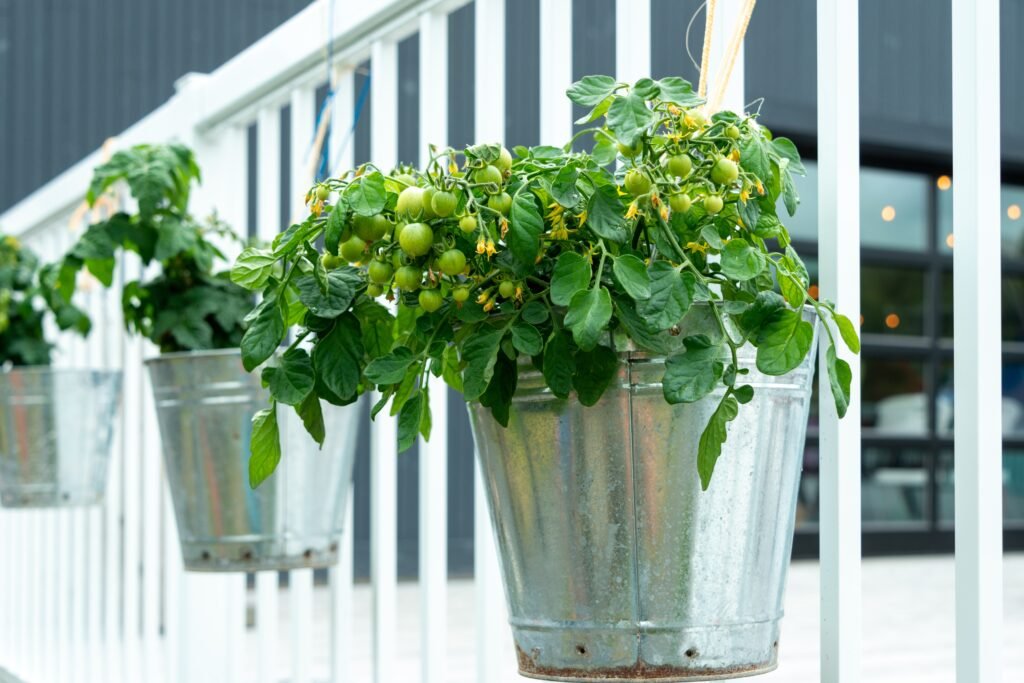
Advantages of Metal Planters:
- Strength: Extremely durable, won’t chip, crack, or scratch. Galvanized steel is particularly weather-resistant.
- Appearance: Available in various metals, offering versatile styles from industrial (galvanized steel, aluminum) to rustic (copper, rusted steel) that suit different decors.
Disadvantages of Metal Planters:
- Weight: Heavy in large sizes, making them difficult to move but ideal for stable placement in large settings.
- Overheating: Can get very hot in direct sunlight, potentially damaging plant roots; best kept in the shade or moved indoors on hot days.
Fiberglass vs. Metal Planters:
- Material: Fiberglass consists of interwoven fibers, while metal planters have a shiny or dull finish.
- Plant Health: Fiberglass is better for plant health as it doesn’t overheat or rust, unlike metal planters, which can burn plants, rust, and degrade over time.
- Durability: Metal planters are prone to rust, which can weaken the structure, while fiberglass is resistant to rust and lasts longer.
6. Wood Planters
Wooden planters are made from various natural materials, including rosewood, cedar, hemlock, fir, pine, and bamboo. These materials are cut into planks or beams, then cured and treated to enhance waterproofing and strength, making them durable and suitable for plant containers. Bamboo pots are especially lightweight.
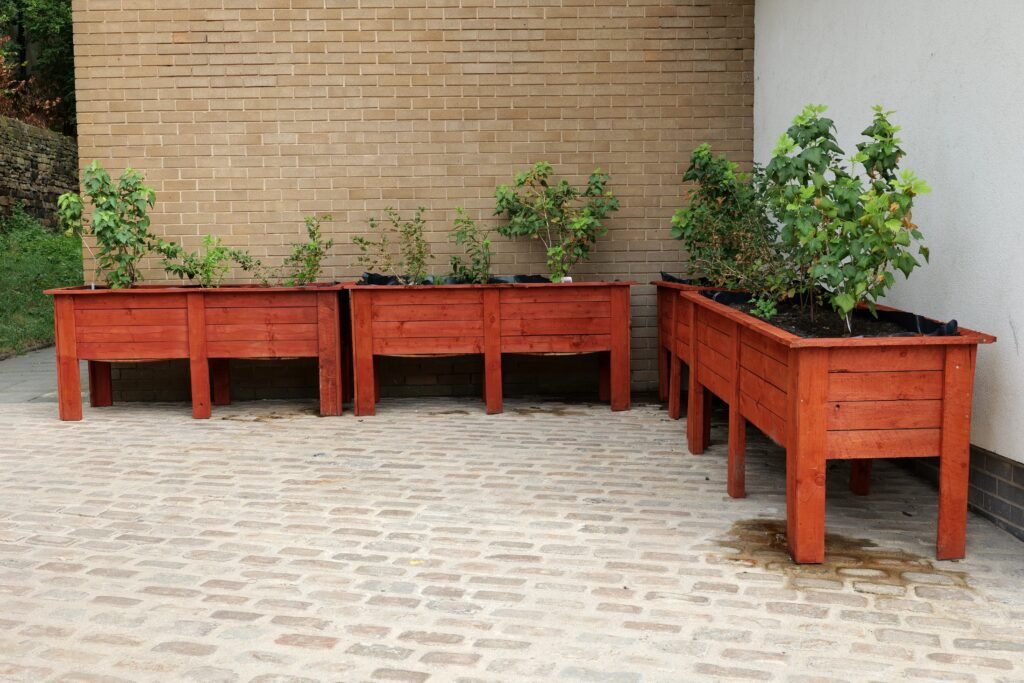
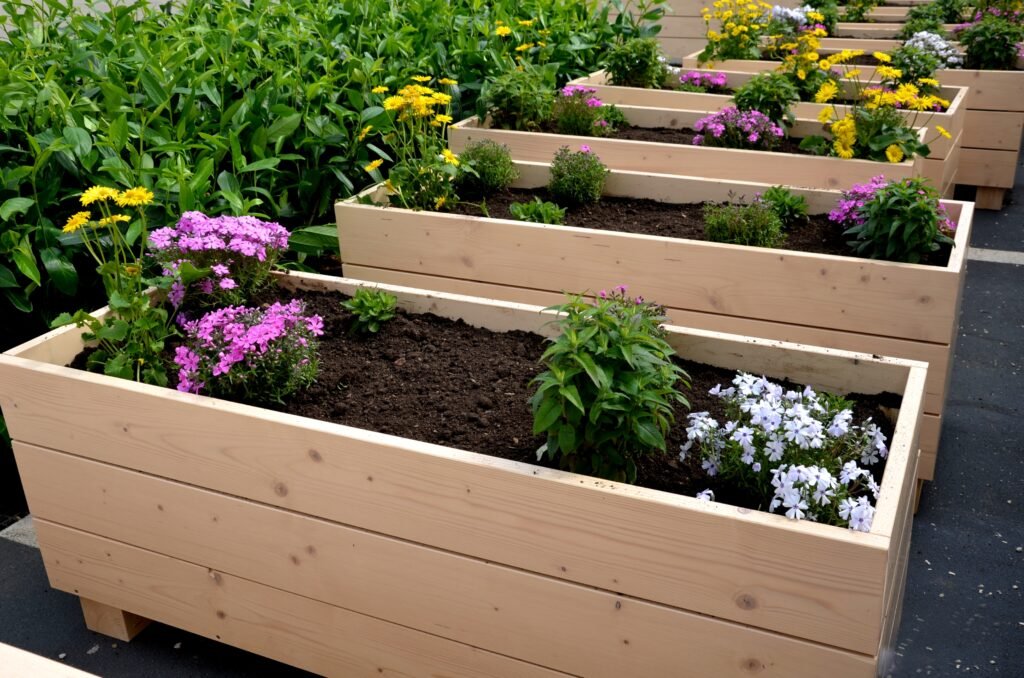
Advantages of Wood Planters:
- Natural Material: Made from natural materials, safe for plants, but require maintenance (e.g., sealing with polyurethane or lacquer) to prevent rot.
- Appearance: Wooden pots have a natural, rustic look, ideal for both outdoor and indoor settings. Bamboo planters are especially visually appealing, and wood offers unique styles like hollowed-out tree trunks that other materials can’t match.
Disadvantages of Wood Planters:
- Life Span: Wooden planters typically last 10-20 years with maintenance, which is shorter compared to the durability of fiberglass.
- Cost: Wood planters are more expensive than plastic pots, with cedar and rosewood being the priciest, though they are also beautiful and waterproof.
Fiberglass vs. Wooden Planters:
- Appearance: Wood has a more rustic or vintage aesthetic, while fiberglass offers more customization options and can mimic other materials.
- Durability: Fiberglass handles varying climates better; wood can degrade faster, especially in humid conditions, even with sealing.
- Customization: Fiberglass can be painted in many styles, while wood retains its natural look, though it can be altered with paints or cuts at a higher cost.
- Cost: Wood planters are often more expensive and may not offer better aesthetics than fiberglass alternatives.
7. Foam Planters
Made from plastic chemicals like Polyurethane and Polyethylene, foam planters come in varying thicknesses and can resemble terracotta in appearance. Polyurethane offers better insulation and can withstand summer and winter, though only to a certain extent. Foam has a high strength-to-weight ratio, but cheaper versions may lack both durability and weight. These planters can be molded into various shapes, sizes, and textures.
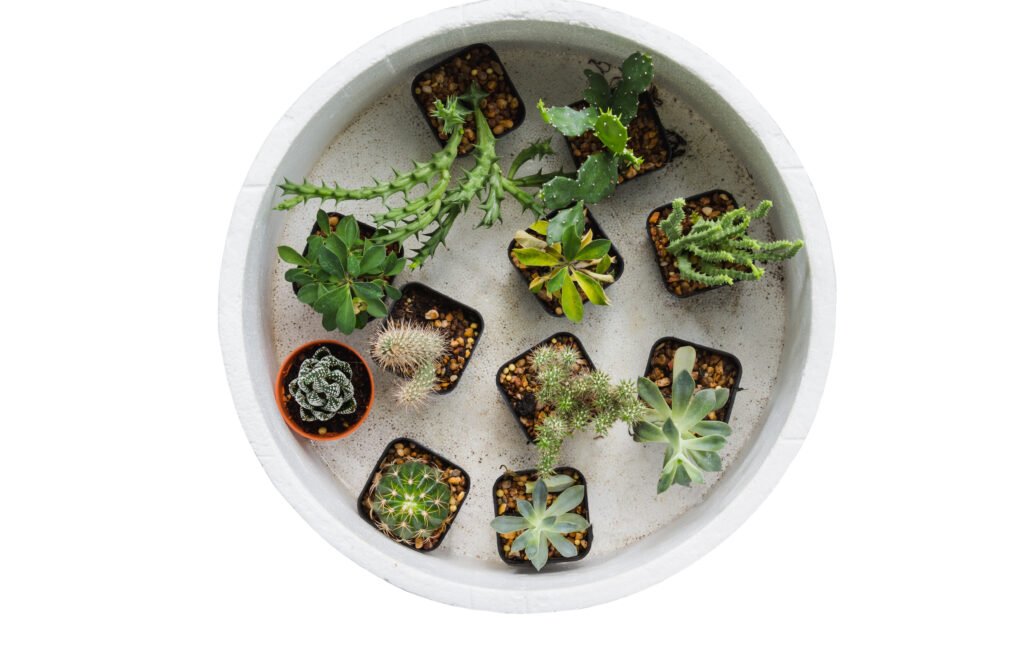
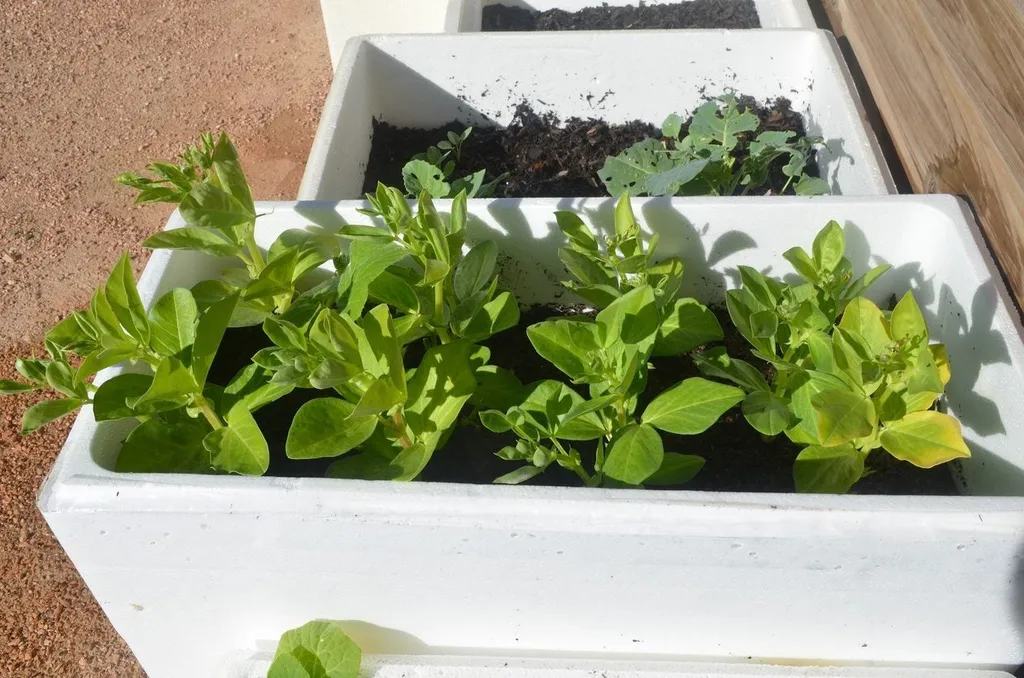
Advantages of Foam Planters:
- Lightweight: Foam is one of the lightest materials, making it easy to transport plants.
- Affordable: Foam planters are inexpensive, often used as temporary pots before upgrading to more durable options.
Disadvantages of Foam Planters:
- Durability: Foam planters have a short lifespan, typically lasting no more than 2 winters.
- Environmental Impact: Foam is prone to chipping and shedding, contributing to plastic pollution over time.
Fiberglass vs. Foam Planters:
- Structural Integrity & Quality: Fiberglass is much more durable and of higher quality compared to foam, which is prone to degradation.
- Customization: Fiberglass offers more customizable options, while foam has limited design choices.
- Temperature Control: Both materials work well in cold climates, but foam degrades and can release harmful chemicals in high temperatures.
- Cost: Foam planters are cheaper, but they are less durable and have more downsides compared to fiberglass.
The Best Material for Outdoor Planters
Fiberglass is the top choice for outdoor planters due to its high performance, versatility, and low environmental impact. It outperforms both cheaper plastic and more expensive materials like concrete or metal. While plastic containers may be suitable for basic plants, fiberglass offers more elegance and is safer for growing edibles. It’s lightweight, strong, and highly customizable in shape, size, and color. Fiberglass can withstand outdoor elements and is easy to move indoors during colder months, making it a superior option compared to heavier or more fragile materials like wood, concrete, or foam.
The Best Material for Indoor Plant Pots
Fiberglass pots are an excellent choice for indoor plants due to their lightweight, durable construction and versatility in shape, size, and finish, offering endless customization for any decor. They are easier to move and handle compared to traditional materials. Terracotta pots are also a great option for indoor use, known for their classic, earthy look. They are porous, allowing soil to breathe and preventing overwatering, making them affordable and suitable for a variety of plant styles.
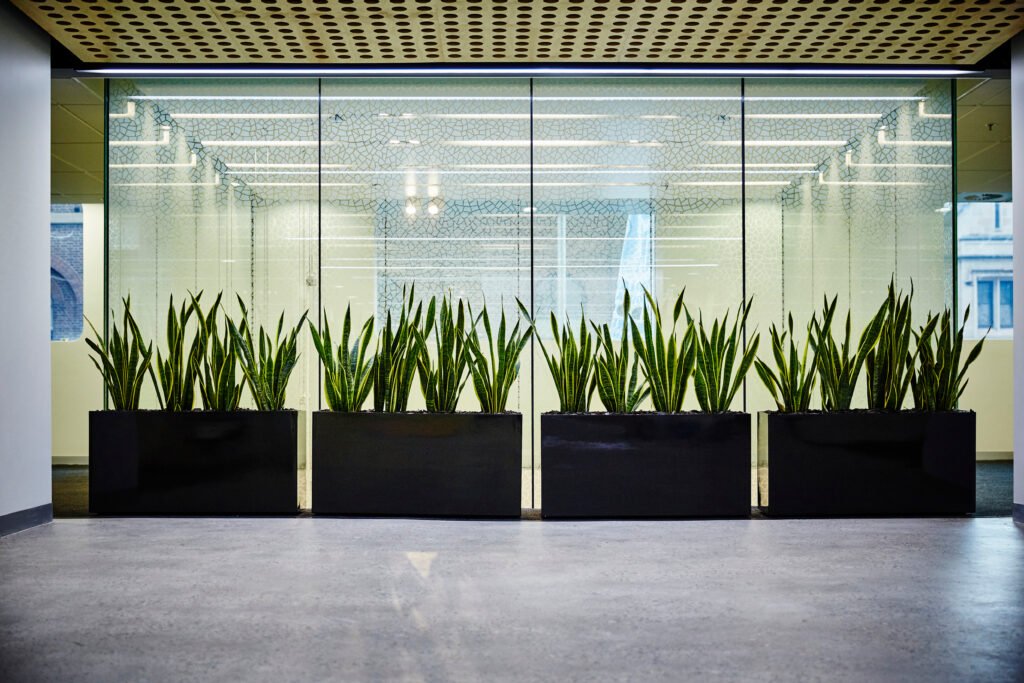
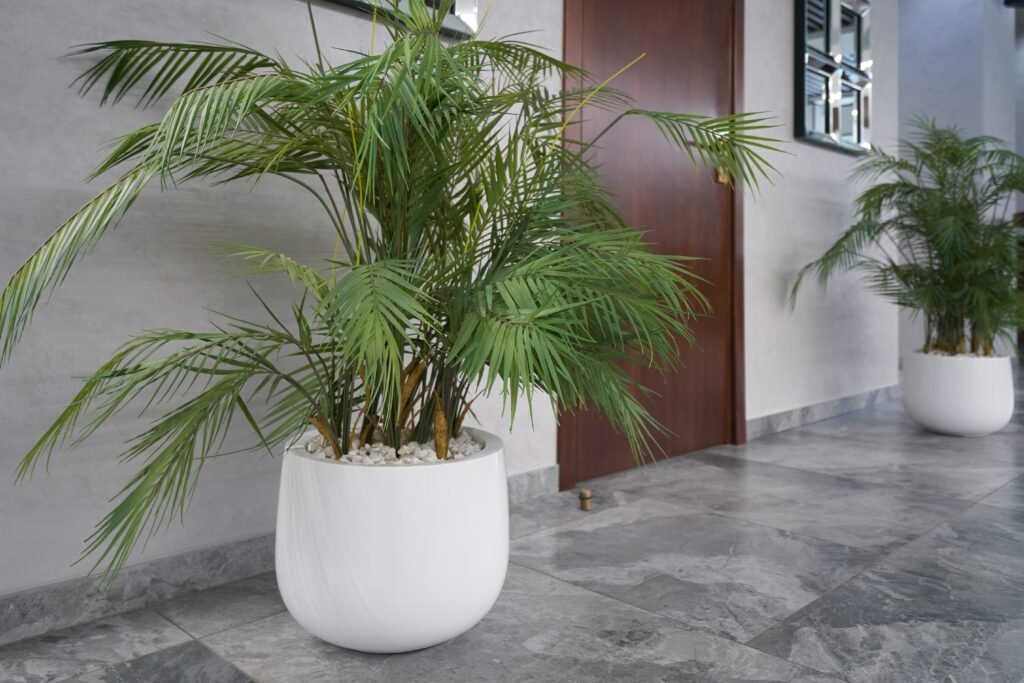
Related Posts
The benefits of Natural Indoor Plants
The Unmatched Beauty and Benefits of Natural Indoor Plants In the hustle and bustle of modern living
Top Tips for Natural Plant Care
Here are some basic plant preparations to help keep your plants healthy and lush: Light: Plants have
The Benefits of Artificial Plants
In today’s fast-paced urban lifestyle, maintaining a connection with nature can be a challenge

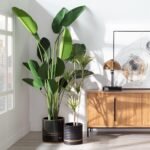
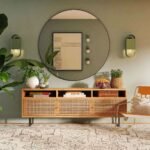
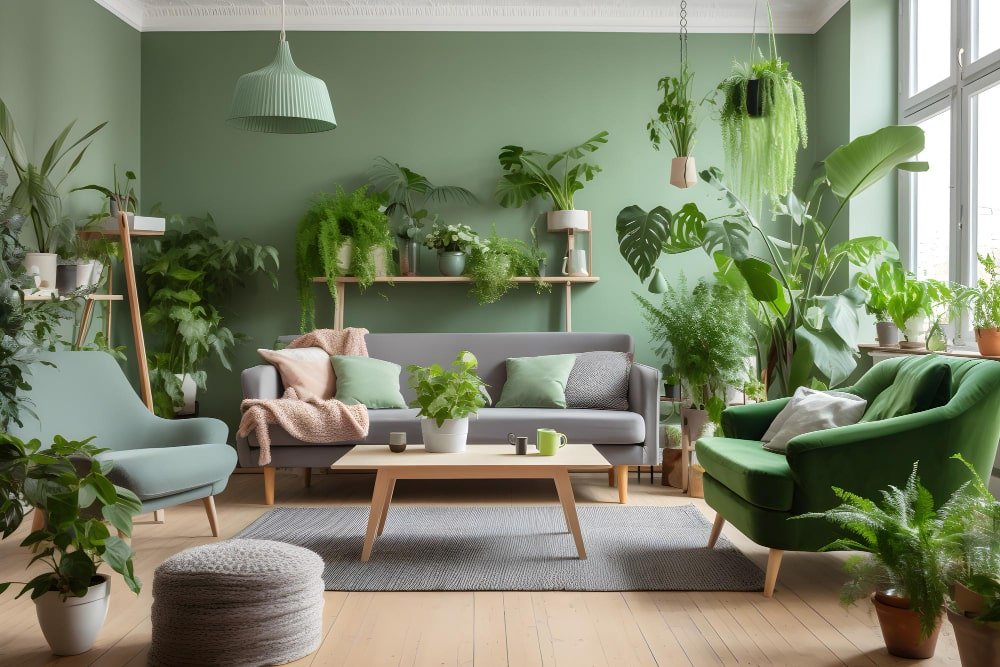

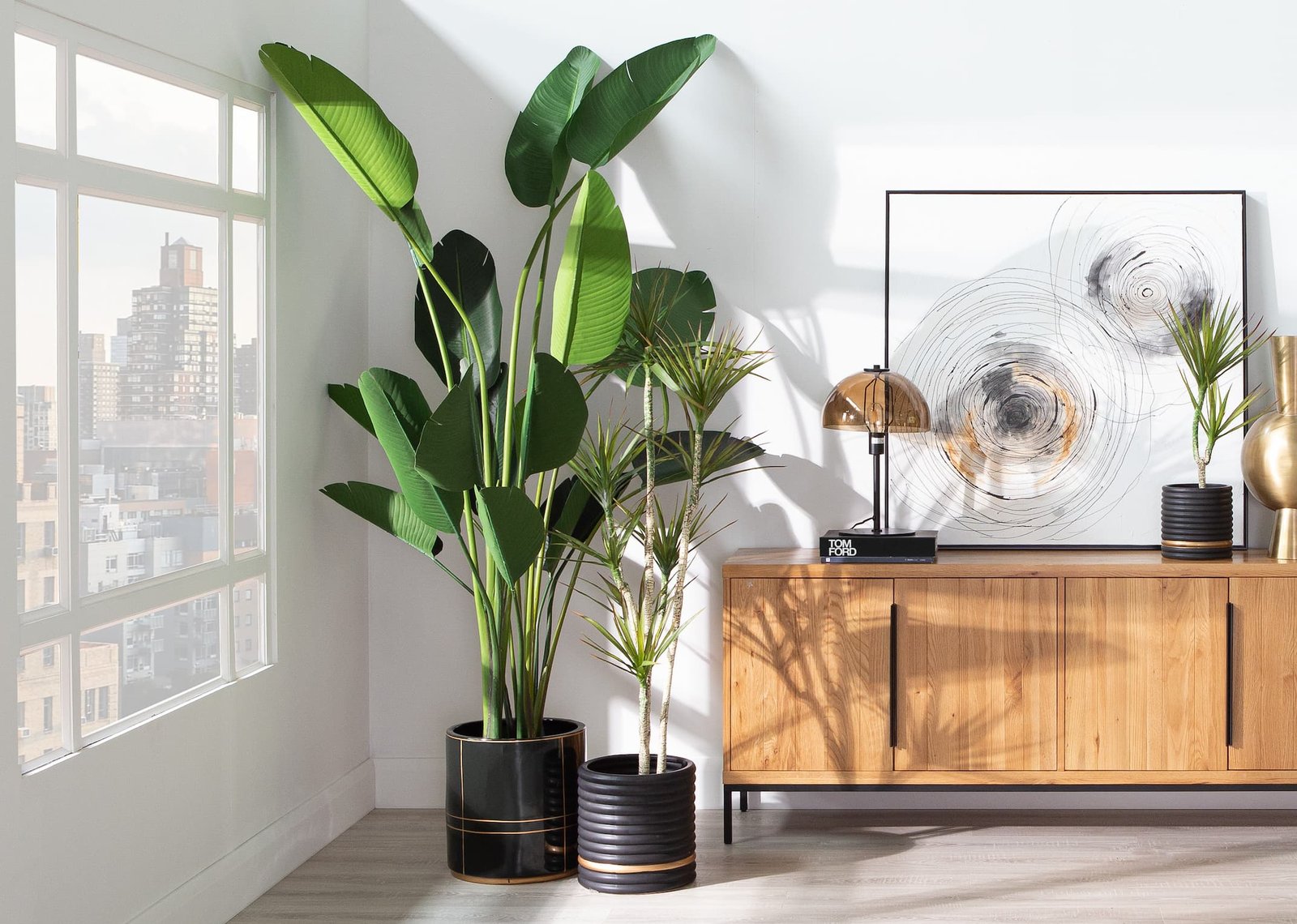
Leave a Reply